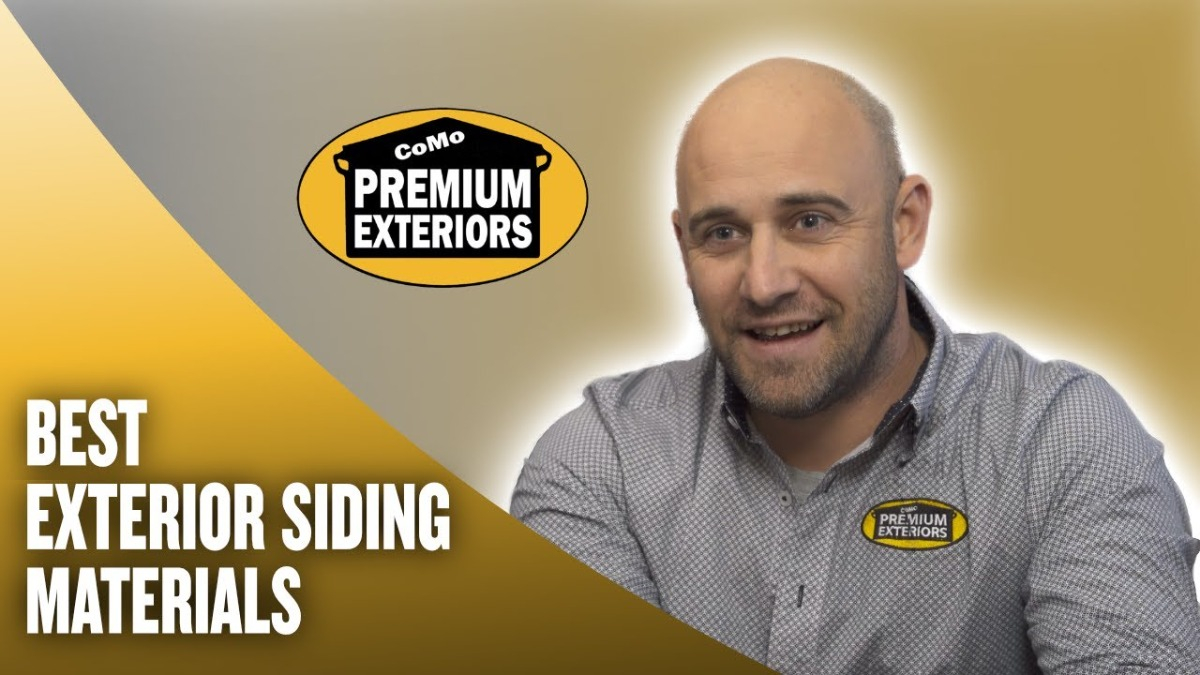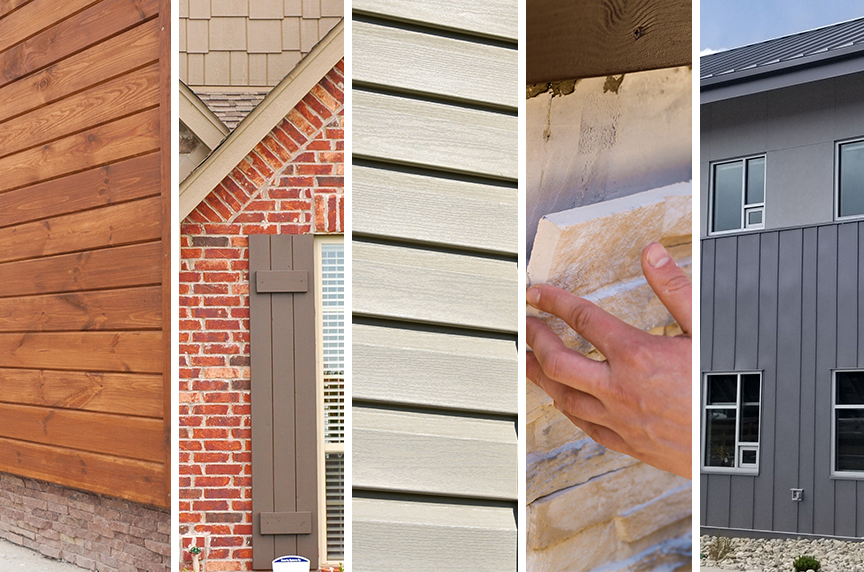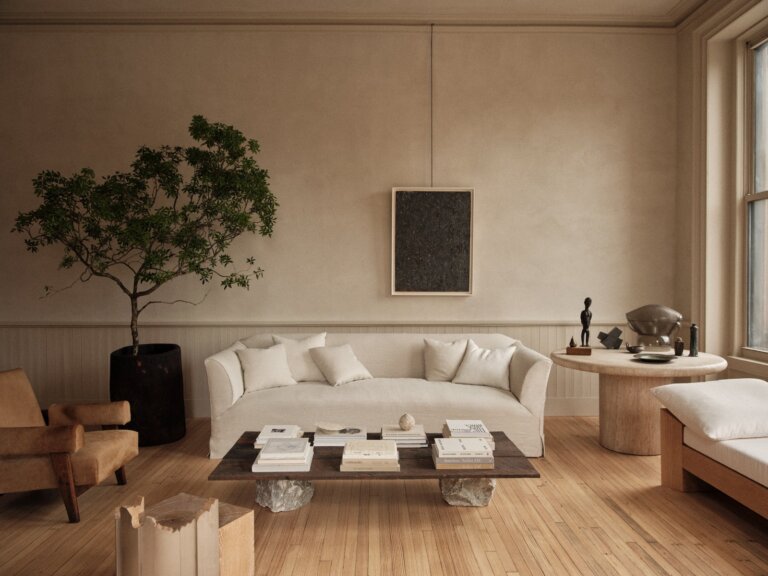Choosing the best siding material can be confusing. Various options exist, each with pros and cons.
What Materials are Best for Siding? Picking the right siding material is vital for your home. It impacts not only aesthetics but also durability and maintenance. With so many choices available, understanding their differences can save time and money. From classic wood to modern vinyl, each material offers unique benefits.
Knowing these can help you make an informed decision. This guide will explore different siding materials, their advantages, and what makes them suitable. Stick around to find out which material suits your home best.
Credit: www.nichiha.com
Introduction To Siding Materials
Choosing the best siding material for your home can be tricky. Popular options include vinyl, wood, fiber cement, and metal. Each offers unique benefits like durability, cost-effectiveness, and aesthetic appeal.
Importance Of Quality Siding
Quality siding protects your home from weather. It keeps the house warm in winter and cool in summer. Good siding can also improve the look of your home. It can even increase the house’s value. Choosing the right material is very important.
Factors To Consider
Durability is key. You want siding that lasts long. Maintenance is another factor. Some materials need more care. Cost matters too. You want something that fits your budget. Look at the appearance. Choose a style that you like. Energy efficiency is important. It helps save on bills. Fire resistance is crucial. Safety comes first.
Vinyl Siding: A Popular Choice for Home Exteriors
Vinyl siding is one of the most common and budget-friendly options for home exteriors. Homeowners love it because it is affordable, durable, and requires very little maintenance. Plus, it comes in a wide range of colors and styles, making it easy to match different architectural designs.
If you are looking for a long-lasting and cost-effective siding option, vinyl might be the perfect choice. However, like any material, it has both advantages and disadvantages. Let’s take a closer look at the pros and cons of vinyl siding.
Pros of Vinyl Siding
- Budget-Friendly – One of the biggest advantages of vinyl siding is its affordability. It costs much less than wood or brick, making it a great option for homeowners on a budget.
- Easy to Install – Vinyl siding is lightweight and designed for quick installation, reducing labor costs and project time.
- Low Maintenance – Unlike wood, vinyl siding does not require painting or staining. A simple wash with soap and water keeps it looking clean.
- Variety of Styles & Colors – With many styles, textures, and colors available, you can find vinyl siding that complements your home’s design. Some even mimic the look of wood without the upkeep.
- Durable & Long-Lasting – Vinyl siding is built to withstand normal wear and tear. It can last for 20 to 40 years with proper care.
- Resistant to Pests & Moisture – Unlike wood, vinyl does not attract termites, rot, or warp due to moisture exposure.
- Energy Efficient – Insulated vinyl siding helps reduce heating and cooling costs, keeping your home comfortable year-round.
Cons of Vinyl Siding
- Can Crack or Break in Extreme Weather – Vinyl can become brittle in very cold temperatures and may crack or break during storms or strong impacts.
- Fades Over Time – Prolonged exposure to direct sunlight can cause vinyl siding to fade, making it look dull or discolored.
- Not the Most Eco-Friendly Option – Vinyl is made from PVC, a type of plastic that is not biodegradable and can be difficult to recycle.
- Challenging to Repair – If a section of vinyl siding gets damaged, replacing it can be tricky. A color mismatch may occur if new siding does not perfectly match the old one.
- Plastic Appearance – Some homeowners feel that vinyl siding lacks the natural look of wood, stone, or brick. This can impact the home’s curb appeal.
- Potential for Moisture Issues – If not installed properly, vinyl siding can trap moisture, leading to mold and mildew growth behind the panels.
- May Lower Home Value – While vinyl siding is practical, some buyers prefer high-end materials like wood or brick, which could affect your home’s resale value.
Wood Siding
Wood siding looks natural and classic. It adds beauty to your home. Wood is an eco-friendly material. It is biodegradable and can be recycled. Wood siding can be painted in many colors. It can be stained to show the wood grain. Wood provides good insulation. It helps keep your home warm in winter. It is also easy to repair. Damaged sections can be replaced without much hassle.
Wood siding needs regular maintenance. It must be painted or stained often. This can be costly and time-consuming. Wood can rot if exposed to moisture. It can also be damaged by insects like termites. Wood is also flammable. It is not the best choice for areas prone to wildfires. Wood siding is usually more expensive than other materials.
Fiber Cement Siding
Fiber cement is very strong. It can last a long time. This siding does not catch fire. It is safe. You can paint it any color. It looks like wood. It does not rot or get bugs. It needs low care. This siding can handle bad weather.
Fiber cement is heavy. It can be hard to install. This siding costs more than some. It needs special tools to cut. It can crack if hit hard. It may need repainting after some years. It takes time to put up.
Engineered Wood Siding
Engineered wood siding looks like real wood. It is strong and lasts long. This siding resists damage from insects and rot. It is easier to install than natural wood. It costs less than real wood.
This siding can swell with water. It may need repainting often. Some types can crack over time. It needs good maintenance. It can be more expensive than vinyl.

Credit: comoexteriors.com
Metal Siding
Metal siding is very strong. It can handle bad weather well. Metal does not rot or get bugs. It is fire-resistant. Metal siding lasts a long time. It needs less care than wood. It also looks modern and clean.
Metal can be expensive to buy. It can get dents from hard hits. Metal siding can be noisy in the rain. Some people think metal looks too cold. It can also rust if not cared for. Metal siding is heavy and hard to cut. It needs special tools to install.
Stucco Siding
Stucco siding is very durable. It can last a long time. It also looks great and can be painted in many colors. Stucco helps to insulate your home. This keeps your house cool in summer. Warm in winter. Stucco is also fire-resistant. This makes your home safer.
Stucco can crack easily. Small cracks can let water in. This can cause damage over time. Stucco is also hard to install. You need a skilled worker to do it right. It can be expensive to fix. It may not be the best choice for wet climates. Wet weather can make it wear out faster.
Brick Siding
Brick siding is very strong. It lasts a long time. It can also resist fire. This makes your house safer. Brick does not need much care. You do not need to paint it. Brick also keeps your house cooler in summer. It looks good on many homes. The color stays the same for years.
Brick siding can be costly. It costs more than other siding. The walls need to be strong to hold the weight. This can add to the cost. Brick also takes time to install. The work can be slow. If a brick breaks, it is hard to replace. You might need a professional to fix it. Brick can also trap moisture. This can lead to mold.
Stone Veneer Siding
Stone veneer looks real but costs less. It is lighter and easier to install. No need for extra support. It can fit any home style. It also needs less upkeep. No painting or sealing often. It boosts home value. A great choice for many.
Stone veneer can crack if hit hard. It is not as strong as real stone. Water can get behind it. This may cause mold. It may not last as long as real stone. Color may fade over time. Needs careful installation to avoid issues. Check often for damage.

Credit: newtechmachinery.com
Choosing The Right Siding
Think about your budget. Some materials are more expensive. Vinyl siding is cheap. Wood siding looks nice but costs more. Brick lasts long but is very pricey. Also, consider the climate. In rainy places, fiber cement works well. In hot areas, metal siding is good. Think about maintenance. Wood needs a lot of care. Vinyl needs less care. Also, think about the look you want. Each material has a different look.
Make a list of your needs. Match the materials to your list. Visit homes with different sidings. Talk to experts. Ask for their advice. Compare prices and benefits. Think about the long-term. Some materials cost more now but save money later. Make sure to choose the best material for your home. The right siding will protect and beautify your home for years.
Frequently Asked Questions
What Is The Most Durable Siding Material?
Fiber cement is the most durable siding material. It resists rot, pests, and weather damage. It requires low maintenance and lasts for decades.
Which Siding Material Is The Most Cost-effective?
Vinyl siding is the most cost-effective option. It is affordable, low-maintenance, and available in various styles and colors.
Is Wood Siding Good For Homes?
Wood siding offers a classic, natural look. It requires regular maintenance to prevent rot and pests but can be long-lasting if properly cared for.
What Are The Benefits Of Metal Siding?
Metal siding is durable, fire-resistant, and low-maintenance. It is available in various styles and colors, making it versatile for many homes.
Conclusion
Choosing the best siding material depends on your needs and budget. Vinyl offers affordability and ease of maintenance. Wood provides a classic, natural look but requires regular upkeep. Fiber cement is durable and fire-resistant, making it a strong choice. Brick is long-lasting and adds value but is costly.
Each material has its pros and cons. Consider what suits your home and climate best. Consult a professional for tailored advice. Proper siding enhances your home’s beauty and protection. Make an informed decision for lasting results.

My name is Mahi Uddin, and I’m a blog writer with over two years of experience specializing in creating engaging, informative content using AI tools. I contribute to InExDecor.com, where I share creative ideas and practical tips for transforming interior and exterior spaces into beautiful, functional environments. With a passion for storytelling and a knack for blending creativity with technology, I strive to craft blogs that not only inform but also inspire readers. When I’m not writing, you can find me exploring design trends or enjoying a good book with a cup of coffee.







